The first Japanese medium tank
After a request from the IJN for a medium tank, Osaka Army Arsenal (Osaka Rikugun Zoheisho) purchased a British Vickers Medium Mark C, then a British medium design in the early stages of conception. The same arsenal had already produced, in 1925, a light tank prototype, which was rejected by the General Staff Office, because of its low speed and very thin armor. In addition, its weight had already risen to nearly 12 tons, too much for a light type. The design was redrawn in 1928, using the Vickers Medium C as a basis, as the army requested a nominal 10 short ton (9.1 metric ton) weight.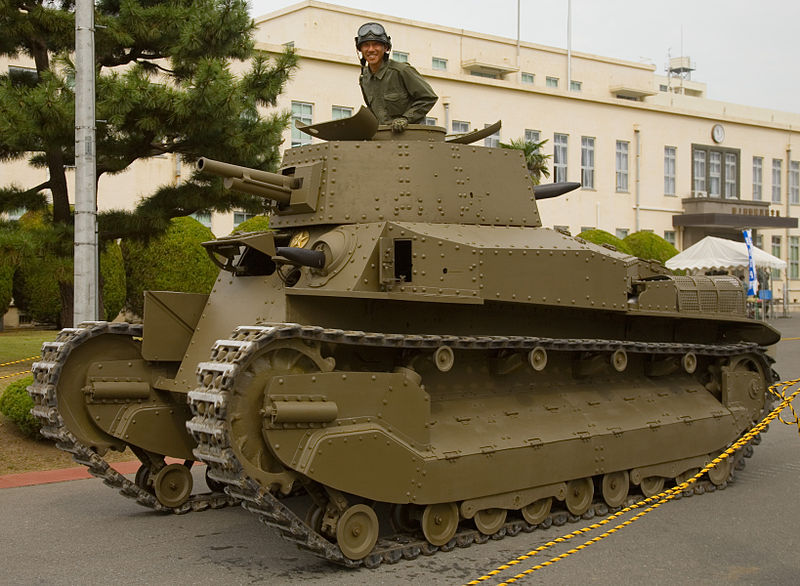
Type 89 I-Go at the Tschiura base
The Type 87, 9.8 ton medium tank was born. However, once tested, it was also rejected. A second design, ready in April 1929, was finally accepted as the Type 89 I-Go (or Yi-Go). The production model's weight rose to 12.8 metric tons. A contract was awarded to Mitsubishi Heavy Industries, which furnished a new purpose-built factory near Sagami Arsenal.
Design of the Type 89A I-Go
Since it was based on the Vickers C design, many of its features were adopted, starting with a recognizable multiple bogie suspension type (two four-wheeled bogies) and a ninth independent forward road wheel, all suspended by traditional leaf springs. The tracks were also supported by five return rollers, mounted along a girder. Propulsion was conveyed through rear drive sprockets. The entire drivetrain was protected by a set of large armored side skirts, with tall mud chutes. The glacis differed from the British model, being a two-part piece, almost vertical. The driver sat on the left, and a machine-gun was placed on the right, in a large ballmount.The armor, made of steel plates (mixed welded and riveted) from Nihon Seikosho Company (JSW), was still relatively thin (6–17 mm/0.24–0.67 in). The turret had a narrow conical design, with a top-hat cupola. It housed a Type 90 57 mm (2.24 in) gun with 100 rounds. This was a medium-velocity short barrel (33 in/0.8 m long) gun with a -15 to +20° depression and elevation. The muzzle velocity was 380 m/s (1,200 ft/s), enough to penetrate 20 mm (0.79 in) from 500 m (550 yd). However, the gun was chiefly intended to deal with concrete pillboxes and fortifications.
The armament was complemented by a frontal Type 91 6.5 mm (0.25 in) hull machine-gun, and a second one in a ballmount at the rear of the turret. Both were protected by armored mantlets, and fed with 2745 rounds. In the earliest models, a Type 11 37 mm (1.46 in) gun was tried, but dropped in favor of the more powerful 57 mm (2.24 in). With a crew of 4, the commander also acted as gunner. Some vehicles were fitted, for night operations, with two searchlights and a Type 94 Mk 4 Hei radio.
Evolution: The Type 89B I-Go
The 1932 Type 89B was a major upgrade, notably dictated by war experience in China, and gradually improved from 1935 to 1939. By then, the total weight had risen to 14 tons. The first major change was that a new engine was adapted, the Mitsubushi A6120VD 6-cylinder air-cooled petrol, which was a diesel, making the Type 89 the first mass-produced diesel tank in the world. This choice was made because of increased performance, giving 120 hp (90 kW)@1800 rpm with an increased capacity of 14,300 cc.It had better torque, was more economical, less flammable and, in a wider scope, more diesel fuel could be produced from each oil barrel. This was accompanied by an increase in speed and range, respectively, to 26 km/h (16 mph) and 170 km (110 mi). War experience also showed the vulnerability of the frontal glacis, which was completely rebuilt with shallow-sloped frontal armor plate. The driver and ballmount positions flipped sides. The asymmetrical hexagonal turret was also new, with the rear ballmount being offset to port. A "mushroom" type cupola with a two-parts hatch replaced the old one. The track links received enlarged claws for better grip, and the number of return rollers was reduced to four.
Unditching gear was also installed on the rear part of the hull. The latest evolution saw the replacement (on 1937 models) of the Type 90 with the Type 97 57 mm (2.24 in) gun, which had a longer barrel and better characteristics.
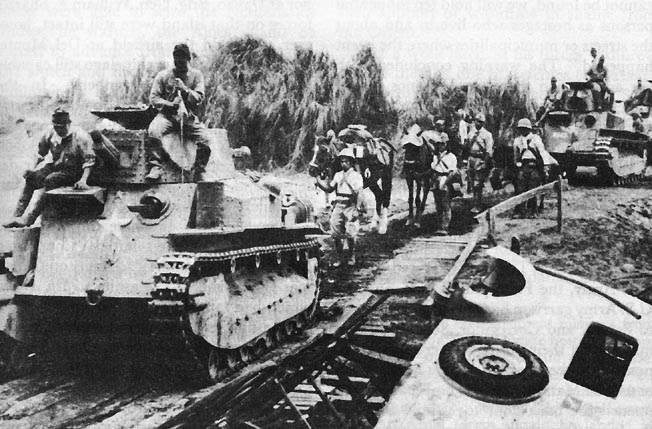
The I-Go in action
In China By 1931, when the first Type 89s were introduced, the IJA still used a mix of imported models, increasingly obsolete. The I-Gos were bigger and better armed than any other Japanese tanks (and tankettes) in service, and quickly established their value in China, from the First Battle of Shanghai in 1932 (with the IJN) until World War Two. In China, they fought against light tanks and tankettes, weakly armed and protected, and few antitank weapons. In 1933, the first independent armor force, consisting of three regiments with two companies, having ten Type 89 each, was formed. This allowed to detach these machines from the navy to the army operating in China. Next year, three other regiments were formed.They soldiered well until 1937 as infantry support tanks, large enough to carry infantry platoons. However, the continental Chinese climate proved too harsh for the initial Mitsubishi gasoline engine, and the "infantry-pace" speed was not always suited for the kind of operations required. By 1935, the lack of armor began to tell, as the Nationalist Chinese introduced new western anti-tank rifles, and other concerns about the engine led to the evolution towards of the Type 89B. By 1939, the bulk of the Type 89s were stationed in China. They were largely obsolescent, as the following events would prove.
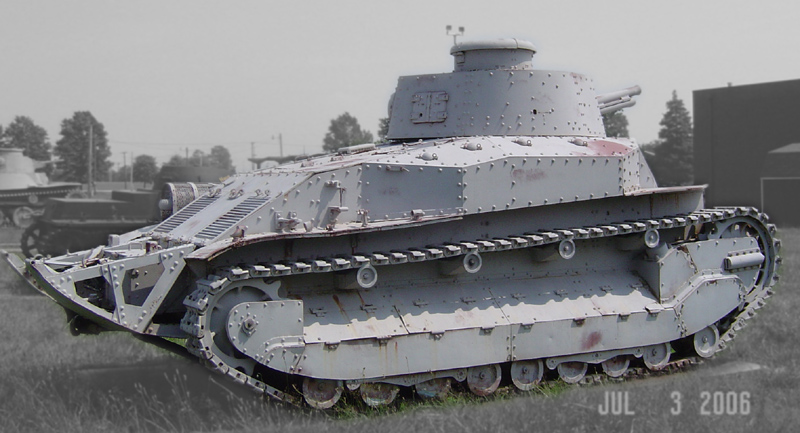
The Soviet-Japanese conflict When the Type 89 met serious opposition for the first time, it was on the Mongolian-Manchurian-USSR border, on the bone-dry, cold steppes of the Nomonhan plateau. On the evening of July, 2, 1939, the 1st Tank Corps (Gen. Yasuoka Masaomi) clashed with the Soviet 11th Tank and 7th Armored Brigades. A total of 34 Type 89s were engaged at Khalkin Gol, successfully overrunning Soviet positions and penetrating deep into enemy territory. Exact losses of the Type 89s are not known. Around a dozen seem to have been damaged, but repaired in the field and successfully withdrawn. However, there were serious concerns about their protection, as they were easily penetrated by Soviet 45 mm (1.77 in) AP shells fired by the T-26 and BT tanks. The Type 89 World War Two By December 1941, the Type 89 was obsolete, but nonetheless retained in active service in China, with some being part of the major invasion of the Philippines, but also later the Battle of Malaya, and Burma campaign. By 1943-44, they were used for local defensive support, in the Netherlands East Indies for example. Their lack of armor was fatal, especially when opposed to largely available US M3 Stuart light tanks, and against nearly all British and Australian models. The last offensive employing many Type 89s was in the October 1944, attempting to retake the Leyte sector, with the 7th Independent Tank Company. Opposing US forces counted many M4 Shermans, and the I-Go was certainly no match for them, taking crippling losses. The last defending Type 89s served as mobile gun positions (perhaps with added sandbags) in Manchuria during the Soviet offensive of August 1945. A single Type 89 was captured and was on display at the US Army Ordnance Museum at Aberdeen. Two more are in Japan, one in running condition at the Tsuchiura GSDF camp near Ibaraki, and the other on display at the Sinbudai Old Weapon Museum (Camp Asaka).
Links
The Type 89 I-Go on Wikipedia On History of War
Type 89A I-Go specifications |
|
| Dimensions (L-w-h) | 5.73 x 2.13 x 2.56 m (18.79x7x8.4 ft) |
| Total weight, battle ready | 9.9 metric tons |
| Crew | 4 (commander, driver, loader, gunner) |
| Armament | Type 90 57 mm (2.24 in) gun 2 x Type 91 6.5 mm machine-guns |
| Armor | 6-17 mm (0.24-0.67 in) |
| Propulsion | Daimler 6-cyl. air-cooled gasoline engine, 118 hp |
| Speed on-road | 16 km/h (10 mph) |
| Range (road) | 150 km (95 mi) |
| Total production (both types) | 409 |
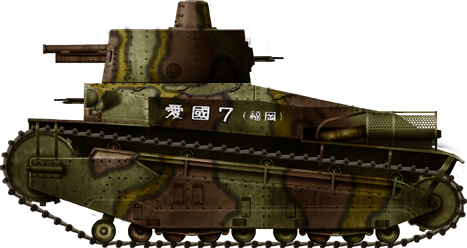
Early production Type 89 I-Go on trials. Note the Japanese Kanjis, which are probably the unit or training markings. HD illustration.
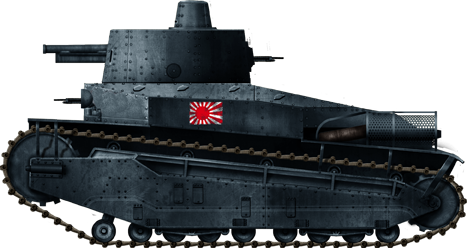
Type 89 I-Go in China, Shanghai incident, Imperial Japanese Navy, First Armored Division, October 1932.
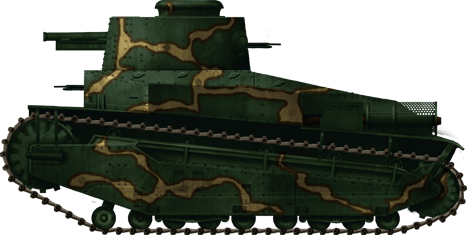
Type 89A I-Go equipped with the late type turret.
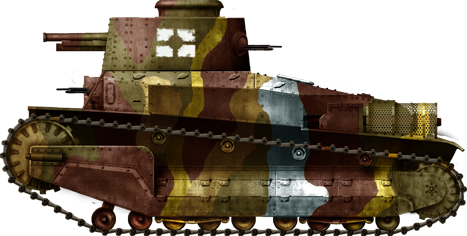
Type 89B I-Go, transitional model, equipped with unprotected machine-guns and early production side skirts. China, 8th Tank Regiment, 1935.
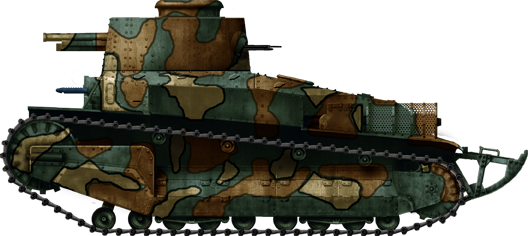
Type 89B I-Go, early production model, part of the Shanghai operations in 1937. Notice the three tone spotted camouflage with blackened borders, typical of the so-called "Japanese style".
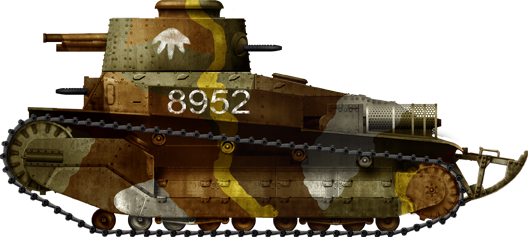
Type 89B I-Go, 7th Armored Brigade, China, 1941.
Gallery
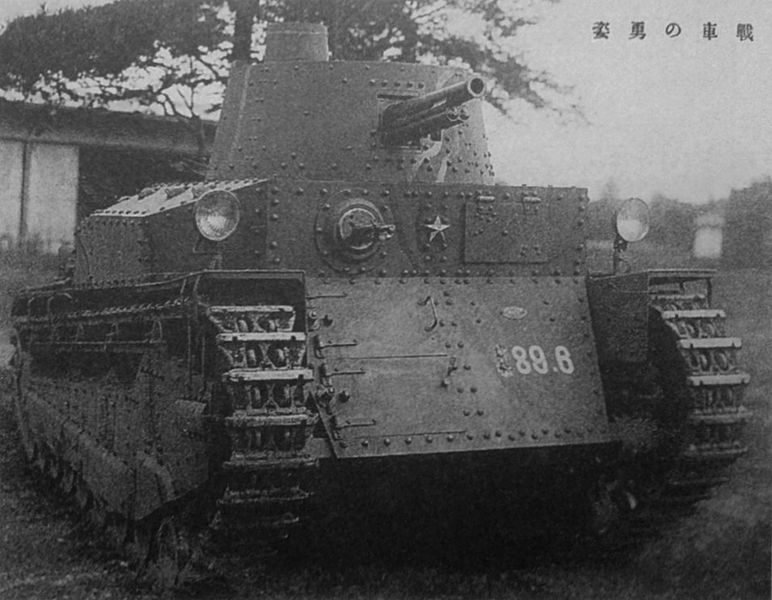
Type 89A, early model.

Get the Poster of the ww2 Imperial Japanese Army Tanks and support us !

WW2 Tanks




























WW2 tanks posters

All Tiger tanks liveries.

Panther liveries and variants

WW2 Armour - All tanks











Tanks aces and single tanks series

Find more there

Museums, Movies, Books & Games
The Tanks and Armor in pop culture
Tanks and armored vehicles in general are only really grasped when seen first person: The mass, the scale, it's all there. Explore also the way tanks were covered in the movie industry, in books and in video games.Movies:
Best tanks movie on warhistoryonline.com
On imdb.com
On bestsimilar.com/
miltours.com
liveabout.com/
watchmojo.com
Video Games:
pcgamesn.com
historyhit.com
levvvel.com
vg247.com/best-tank-games
mmobomb.com/
alienwarearena.com

